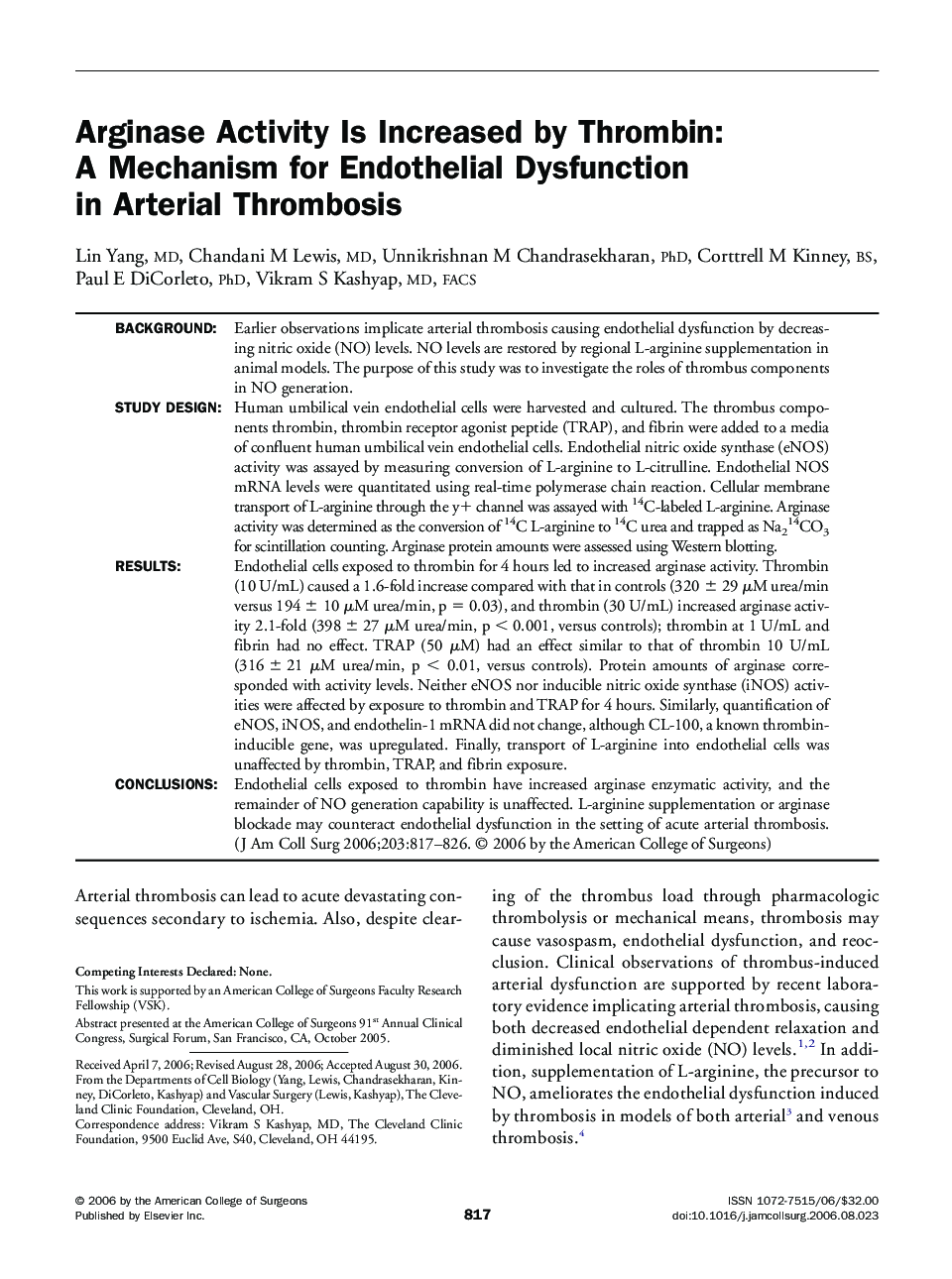| Article ID | Journal | Published Year | Pages | File Type |
|---|---|---|---|---|
| 4295909 | Journal of the American College of Surgeons | 2006 | 10 Pages |
BackgroundEarlier observations implicate arterial thrombosis causing endothelial dysfunction by decreasing nitric oxide (NO) levels. NO levels are restored by regional L-arginine supplementation in animal models. The purpose of this study was to investigate the roles of thrombus components in NO generation.Study designHuman umbilical vein endothelial cells were harvested and cultured. The thrombus components thrombin, thrombin receptor agonist peptide (TRAP), and fibrin were added to a media of confluent human umbilical vein endothelial cells. Endothelial nitric oxide synthase (eNOS) activity was assayed by measuring conversion of L-arginine to L-citrulline. Endothelial NOS mRNA levels were quantitated using real-time polymerase chain reaction. Cellular membrane transport of L-arginine through the y+ channel was assayed with 14C-labeled L-arginine. Arginase activity was determined as the conversion of 14C L-arginine to 14C urea and trapped as Na214CO3 for scintillation counting. Arginase protein amounts were assessed using Western blotting.ResultsEndothelial cells exposed to thrombin for 4 hours led to increased arginase activity. Thrombin (10 U/mL) caused a 1.6-fold increase compared with that in controls (320 ± 29 μM urea/min versus 194 ± 10 μM urea/min, p = 0.03), and thrombin (30 U/mL) increased arginase activity 2.1-fold (398 ± 27 μM urea/min, p < 0.001, versus controls); thrombin at 1 U/mL and fibrin had no effect. TRAP (50 μM) had an effect similar to that of thrombin 10 U/mL (316 ± 21 μM urea/min, p < 0.01, versus controls). Protein amounts of arginase corresponded with activity levels. Neither eNOS nor inducible nitric oxide synthase (iNOS) activities were affected by exposure to thrombin and TRAP for 4 hours. Similarly, quantification of eNOS, iNOS, and endothelin-1 mRNA did not change, although CL-100, a known thrombin-inducible gene, was upregulated. Finally, transport of L-arginine into endothelial cells was unaffected by thrombin, TRAP, and fibrin exposure.ConclusionsEndothelial cells exposed to thrombin have increased arginase enzymatic activity, and the remainder of NO generation capability is unaffected. L-arginine supplementation or arginase blockade may counteract endothelial dysfunction in the setting of acute arterial thrombosis.
